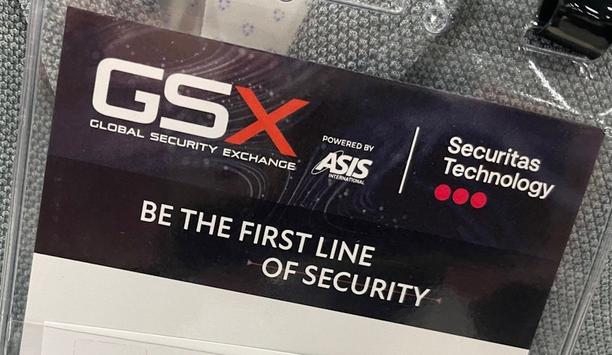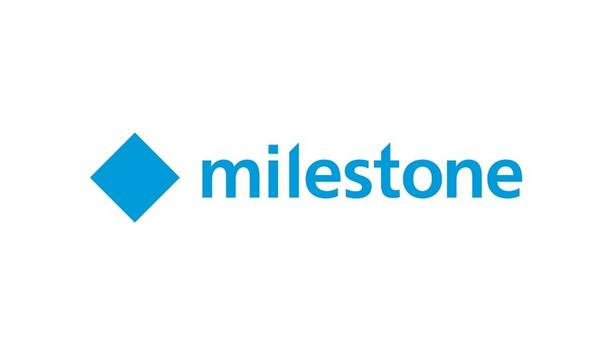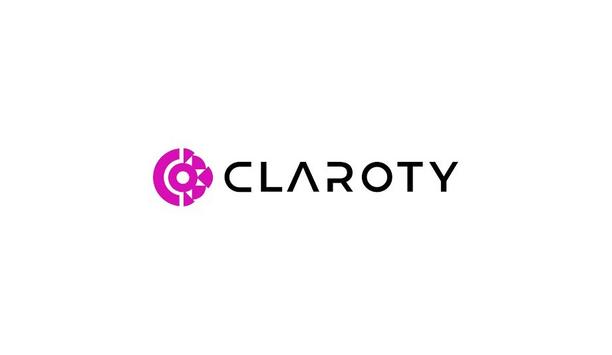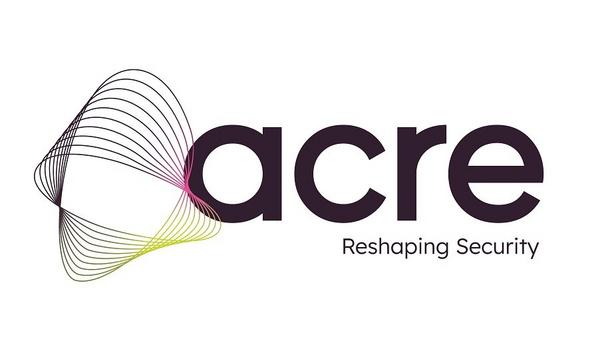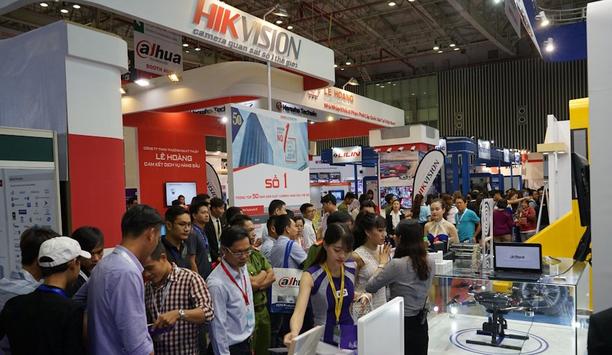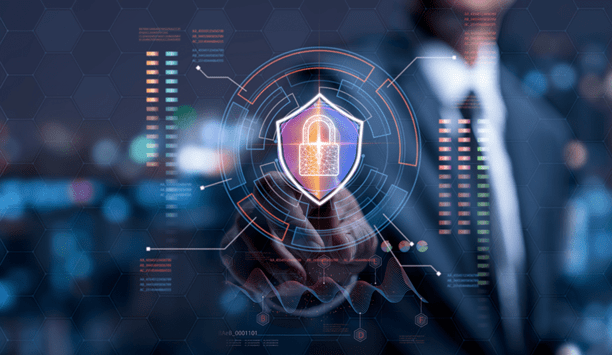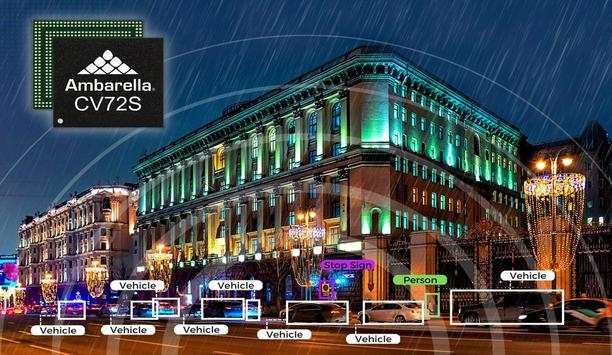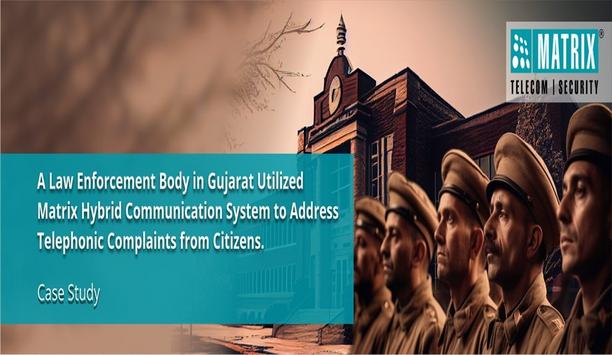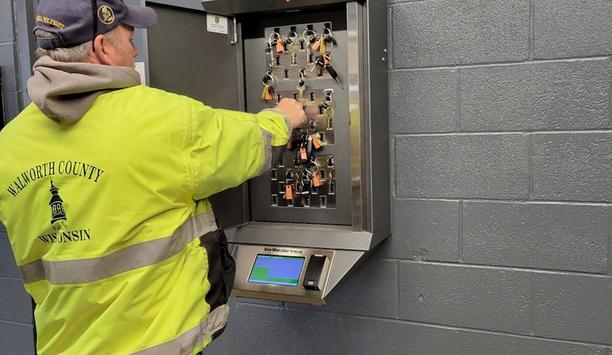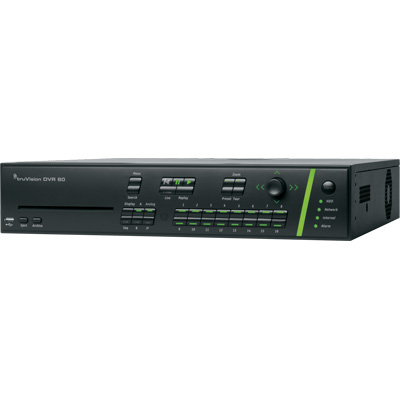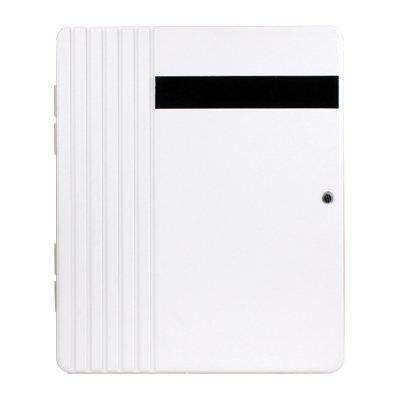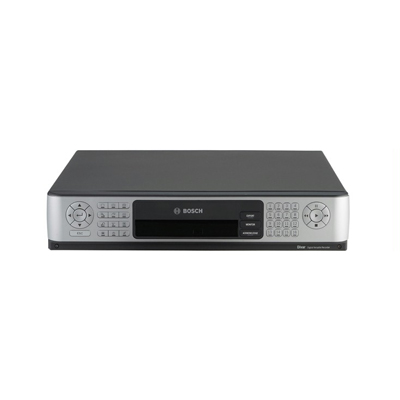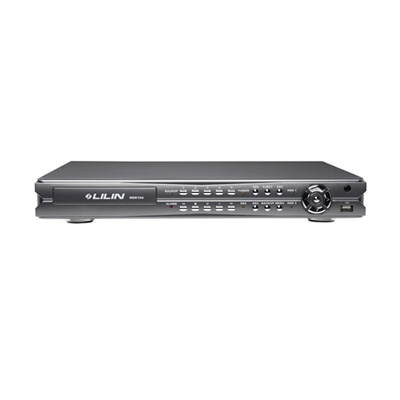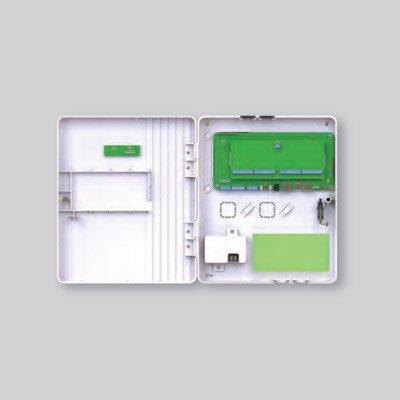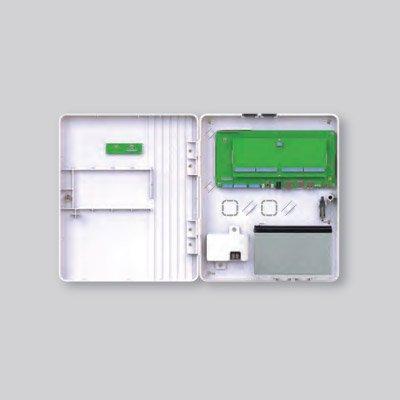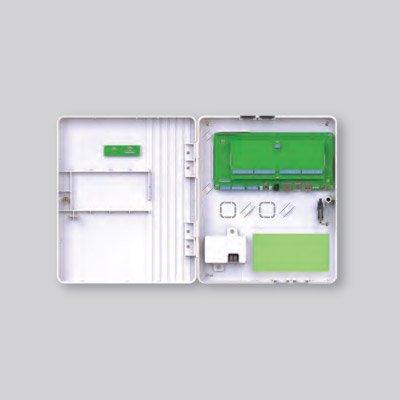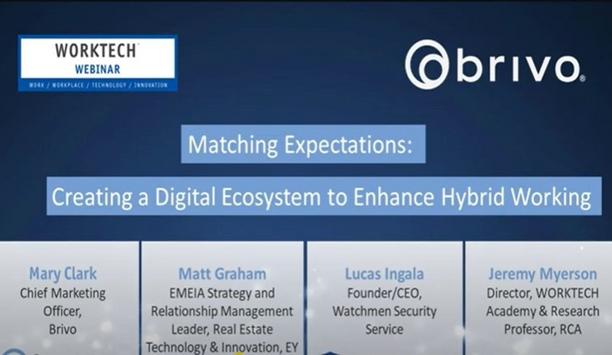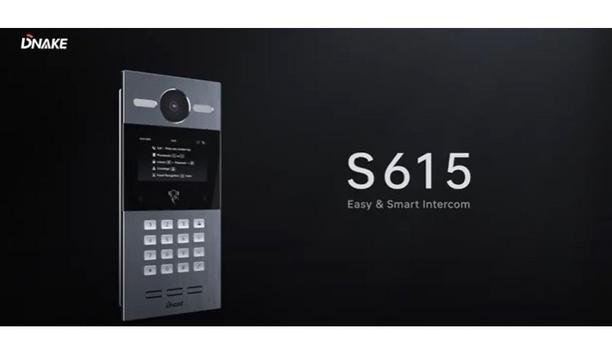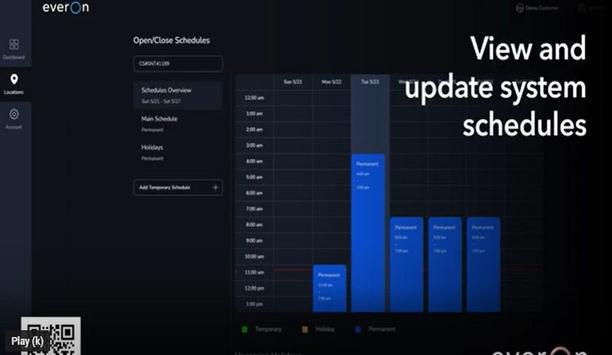Hybrid security
Axis Communications, a pioneer in network video, shares its expert insights into some of the principal influences that will guide decision-making in the year ahead in its latest tech trends study. Now in its tenth year, researchers highlight the underlying theme of IT’s increasing involvement in decisions related to security and safety technology. Growing focus on ‘ecosystem-first’ Decisions define direction, and ecosystems drive decisions. Increasingly, as IT’s influe...
In the ongoing implementation of the EU’s NIS2 Directive, much attention has been paid to its implications for cybersecurity. Yet, arguably, the impact on organizations’ physical security and access strategy is just as important. In fact, NIS2 ushers in a new degree of focus on cyber–physical resilience – with significant potential penalties for organizations which do not comply with the framework’s demands. NIS2 replaces 2016’s original NIS Directive on Netw...
There was high-level energy at GSX 2025, befitting an industry undergoing massive change. Artificial intelligence (AI) was everywhere, but not so much in the booth signage. Rather, AI has made its way beyond marketing claims and solidly into the core of the products themselves. There were hundreds of examples of how AI is changing how security systems operate, all for the better. Clearly on display at GSX 2025 was an industry in the midst of metamorphosis. Deep integration of AI My con...
Blaize Holdings, Inc., an edge AI computing pioneer, announced that its edge AI platform will be deployed across more than 250,000 intelligent surveillance endpoints beginning in Q2 2025 and continuing through 2026 — supporting a national-scale transformation of real-time smart infrastructure across Southeast Asia through a scalable, hybrid AI deployment. The total value of the contracted purchase order is approximately $56 million, with $6 million in initial revenue expected to...
Sopra Steria, a major European player in the tech sector, announces the integration of hybrid post-quantum encryption technology at the heart of Datasphere, its data-centric security solution. The solution now offers a unique combination of data labeling, attribute-based access control and the latest quantum-proof encryption technologies. This development marks a decisive step forward in securing sensitive data, at a time when the acceleration of computing power is paving the way for new cyber...
Euro Defense Expo (EUDEX) is making its debut with its own stand at Rü.Net. On 3 and 4 September, the exhibition team will be on hand at the Defense Users Forum to provide information about this new international trade fair for the defense industry. Stand 5 A, located directly at the entrance to the Rhein-Mosel-Halle in Koblenz, will serve as a central point of contact for anyone wishing to find out more about EUDEX. Future trends in the defense industry "This partnership highlights the...
News
Milestone Systems announces updates across its complete security technology portfolio with releases for XProtect video management software, BriefCam AI-powered analytics, and Arcules cloud video security. Each of these products give security professionals more powerful tools to protect people and assets while streamlining operations. Providing integrated security solutions Security teams can now benefit from improvements across all three platforms The releases demonstrate Milestone's commitment to providing integrated security solutions that address the full spectrum of modern security challenges, from on-premises operations to cloud-based deployments and advanced analytics. Security teams can now benefit from improvements across all three platforms. Access control visualization Security operations often struggle with switching between different interfaces to monitor video and access control systems. The new XProtect 2025 R2 addresses this challenge by bringing access control directly onto Smart Map. Operators can now see doors and access points, such as card readers, entry gates, turnstiles, and other controlled entry devices, on the same map as their cameras, making it easier to monitor facility security at a glance. When an access-related event occurs, the door icon on the map automatically updates, allowing operators to quickly identify issues. Teams can acknowledge alarms and control doors directly from the map interface, saving valuable time during security incidents when every second counts. Practical workflow improvements Operators will notice several practical improvements in their daily workflow Operators will notice several practical improvements in their daily workflow. When creating image snapshots in investigations, operators can now include time stamps and camera information directly on the images, a frequently requested feature that improves traceability in reports. The Smart Client also combines previously separate HTML and image/text functions, making it easier to build comprehensive security dashboards. For development partners, XProtect 2025 R2 enhances the Milestone Integration Platform with geographic positioning for access control units and expanded video codec support for web applications. The Milestone AI Bridge 2.0.0 is now officially available for production, making it easier for organizations to integrate artificial intelligence with their security video. Enhanced analytics portfolio The latest updates from BriefCam focus on delivering more reliable performance and intuitive operation for security teams using video analytics. Key enhancements include: Enhanced stability through modernised infrastructure and strengthened security frameworks for consistent performance when analyzing large volumes of video data New Home Research Dashboard with tailored views for specific use cases, making it easier for different types of users to access the tools they need most Improved visualization capabilities through enhanced mapping in the Respond Module to help better understand incident patterns and locations Streamlined workflows for creating custom classifications and improved synchronization with video management systems Flexible cloud security solutions For organizations transitioning to cloud-based security, Milestone's Arcules platform has received substantial enhancements that address the growing demand for flexible, scalable video surveillance solutions. The updated platform delivers: Improved enterprise scalability, allowing organizations to expand their video security coverage without compromising performance or management complexity Enhanced user management capabilities that provide administrators with better control over access permissions and system configurations Expanded analytics features that help security teams extract more value from their video data and identify patterns more effectively Better integration capabilities with existing security infrastructure, making it easier to adopt cloud-based video surveillance without disrupting established workflows These improvements enable organizations to deploy hybrid security architectures that seamlessly integrate cloud and on-premises components, providing the flexibility to adapt security strategies as needs evolve.
Milestone Systems announced updates across its complete security technology portfolio with releases for XProtect video management software, BriefCam AI-powered analytics, and Arcules cloud video security. Each of these products gives security professionals more powerful tools to protect people and assets while streamlining operations. The releases demonstrate Milestone's commitment to providing integrated security solutions that address the full spectrum of modern security challenges, from on-premises operations to cloud-based deployments and advanced analytics. Security teams can now benefit from improvements across all three platforms. Access control visualization The new XProtect 2025 R2 addresses this challenge by bringing access control directly onto Smart Map Security operations often struggle with switching between different interfaces to monitor video and access control systems. The new XProtect 2025 R2 addresses this challenge by bringing access control directly onto Smart Map. Operators can now see doors and access points, such as card readers, entry gates, turnstiles, and other controlled entry devices, on the same map as their cameras, making it easier to monitor facility security at a glance. When an access-related event occurs, the door icon on the map automatically updates, allowing operators to quickly identify issues. Teams can acknowledge alarms and control doors directly from the map interface, saving valuable time during security incidents when every second counts. Practical workflow improvements Operators will notice several practical improvements in their daily workflow. When creating image snapshots in investigations, operators can now include time stamps and camera information directly on the images, a frequently requested feature that improves traceability in reports. The Smart Client also combines previously separate HTML and image/text functions, making it easier to build comprehensive security dashboards. Milestone AI Bridge 2.0.0 XProtect 2025 R2 enhances the Milestone Integration Platform with geographic positioning for access For development partners, XProtect 2025 R2 enhances the Milestone Integration Platform with geographic positioning for access control units and expanded video codec support for web applications. The Milestone AI Bridge 2.0.0 is now officially available for production, making it easier for organizations to integrate artificial intelligence with their security video. Enhanced analytics portfolio The latest updates from BriefCam focus on delivering more reliable performance and intuitive operation for security teams using video analytics. Key enhancements include: Enhanced stability through modernized infrastructure and strengthened security frameworks for consistent performance when analyzing large volumes of video data New Home Research Dashboard with tailored views for specific use cases, making it easier for different types of users to access the tools they need most Improved visualization capabilities through enhanced mapping in the Respond Module to help better understand incident patterns and locations Streamlined workflows for creating custom classifications and improved synchronization with video management systems Flexible cloud security solutions For organizations transitioning to cloud-based security, Milestone's Arcules platform has received substantial enhancements that address the growing demand for flexible, scalable video surveillance solutions. The updated platform delivers: Improved enterprise scalability, allowing organizations to expand their video security coverage without compromising performance or management complexity Enhanced user management capabilities that provide administrators with better control over access permissions and system configurations Expanded analytics features that help security teams extract more value from their video data and identify patterns more effectively Better integration capabilities with existing security infrastructure, making it easier to adopt cloud-based video surveillance without disrupting established workflows These improvements enable organizations to deploy hybrid security architectures that seamlessly integrate cloud and on-premises components, providing the flexibility to adapt security strategies as needs evolve.
Claroty, the cyber-physical systems (CPS) protection company, announces new capabilities in its SaaS-based Claroty xDome platform that provide organizations with an impact-centric view of their CPS environment. The new additions, Device Purpose and Risk Benchmarking, allow users to see how the overall risk of an environment is affected by the processes involved in a device’s use – as production lines, building floors, hospital wings, and more – and prioritize risk reduction efforts based on potential impact to business outcomes, while bridging the gap between CPS personnel and other business units. Organizations becoming aware According to Gartner, “Organizations are becoming aware of their blind spots. Asset-intensive organizations increasingly realize that CPS environments are value creation centers. A manufacturing company makes money by producing goods, for instance.” “Once largely ‘out of sight, out of mind,’ boards and C-suite executives increasingly want to know how their CPS production and mission-critical environments are protected.” Evolving asset-centric approach To date, the CPS protection industry has taken an asset-centric approach by providing in-depth visibility into specific assets and their associated risks. While establishing a comprehensive asset inventory is a necessary first step for any cybersecurity program, taking a solely asset-centric approach to reducing CPS risk may lead security teams to focus on assets that would have little to no impact on the business if compromised. Organizations must be able to prioritize their limited remediation resources based on the business purpose each asset serves, whether it delivers essential services to the general population or powers the organization’s largest revenue stream. In instances such as a security analyst and OT engineer looking at two identical devices with the same exposures, knowing what each device does for the business is critical for determining which to address first. Claroty xDome’s new Device Focusing on business context and outcomes provides a shared language for security teams and CPS operators Claroty xDome’s new Device Purpose and Risk Benchmarking capabilities make this paradigm shift from asset-centric to impact-centric risk reduction possible, by equipping teams responsible for maintaining mission-critical processes and devices with the business context they need to effectively prevent process disruption, downtime, and financial loss. Focusing on business context and outcomes provides a shared language for security teams and CPS operators while connecting their work with larger Business Impact Analysis efforts for the organization. Words from Claroty Chief Product Officer “The security of critical infrastructures are under growing scrutiny as adversaries increasingly target these systems of the greatest criticality,” said Yoram Gronich, Chief Product Officer at Claroty. “The teams managing these environments are facing mounting pressure from multiple fronts in their organizations and need tools that exponentially make their jobs easier so they can focus on protecting the mission-critical infrastructures that sustain societal operations—that means having the business context to meaningfully reduce risk.” Key benefits Key benefits of Claroty xDome’s new Device Purpose and Risk Benchmarking include: Device Purpose: Align assets with their business context View assets categorized in a hierarchy and taxonomy according to the user’s vertical Refine hierarchy and taxonomy from a verticalized baseline, including business impact scores Measure the impact to device risk and overall risk scores based business impact customizations Risk Benchmarking: Compare organizational risk versus industry peers Analyze how the organization’s risk landscape stacks up against similarly-sized organizations Visualize how the most critical assets are secured Measure risk reduction efforts over time across multiple risk factors across networks
Acre Security, a global pioneer in providing cutting-edge security platforms, has announced the appointment of Jon Nelson as Senior Vice President of Engineering. With more than 25 years of experience leading large-scale, cross-functional engineering and product development teams, Nelson will oversee Acre’s global engineering strategy, platform transformation initiatives, and its consistent delivery of next-generation security solutions. Extensive experience Nelson joins ACRE from Rockwell Automation, where he led the Managed Services team Nelson joins ACRE from Rockwell Automation, where he led the Managed Services team within Rockwell’s Digital business, serving hundreds of enterprise customers across product lifecycle management, supply chain, and predictive analytics. Previously, as a Partner at Kalypso, a Rockwell Automation company, he spearheaded a multi-year transformation program in the medical sector, achieving a 75% reduction in product change cycle times, while standardizing product data and development processes across hardware, software, and firmware. Acre CEO on the appointment “John brings a deep understanding of the intersection between cloud platforms, software development, and systems engineering,” said Kumar Sokka, CEO Designate, Acre Security. He adds, “His leadership will be key to advancing our innovation agenda as we modernize our technology stack, optimize R&D operations, and accelerate the delivery of secure, scalable solutions that meet our customers’ needs — both today and as they grow into the future.” SVP of Engineering's responsibilities In his new role, Nelson will lead acre’s engineering organization with a focus on operational excellence, product lifecycle integration, and platform consolidation. He will be responsible for modernizing engineering execution across the company’s diverse product lines and aligning product development with business growth and customer success. Nelson’s words “I’m excited to join acre at this pivotal time, as the company is leading the charge in connecting the legacy of the security industry with the possibilities of tomorrow’s technology,” said Jon Nelson. He adds, “We’re making strides in redefining how security solutions are built and delivered, and I’m eager to lead an engineering organization focused on innovation, excellence, and lasting value for our customers.”
Against the backdrop of Vietnam’s expanding security, fire safety, and smart building sectors, Secutech Vietnam will return to the Saigon Exhibition and Convention Center (SECC) in Ho Chi Minh City from 14 – 16 August 2025. The 18th edition will span 13,000 sqm, hosting 480 exhibiting brands, presenting the latest solutions driving safer cities and smarter infrastructure. Held with concurrent events Fire & Safety Vietnam and SMABuilding, Secutech Vietnam will spotlight technologies advancing safety, efficiency, and resilience across the country’s urban and industrial sectors. Increasing Demand Driving this demand is a 7.3% year-on-year increase in Foreign Direct Investment (FDI) in Vietnam Driving this demand is a 7.3% year-on-year increase in Foreign Direct Investment (FDI) in Vietnam, reaching over USD 6.7 billion in the first four months of 2025. This influx creates significant opportunities for companies offering security systems, fire protection equipment, and smart building technologies. In addition, the country’s rapid infrastructure development, and its construction sector’s integration of advanced security solutions, further heightens the need for enhanced security measures. Secutech Vietnam provides a targeted networking environment, connecting exhibitors directly with investors, developers, and project managers seeking innovative solutions. Factors driving market growth Ms Regina Tsai, General Manager of Messe Frankfurt (HK) Ltd – Taiwan Branch, elaborated on the factors driving market growth: “The demand for safety and security in Vietnam is on the rise, fueled by market expansion, urbanisation, and government initiatives such as smart city investments and stricter safety regulations.” “These efforts are bolstering urban resilience and creating a significant need for advanced solutions. Testament to the market’s potential, the healthy showing of exhibitors at Secutech Vietnam 2025 are featuring a wide array of technologies, from surveillance cameras, to synergy voice alarm systems, to advanced fire suppression systems.” “This platform serves as a catalyst for international suppliers to connect with Vietnamese businesses eager to enhance their capabilities.” More to showcase at the fair In addition to traditional security systems, the fair will showcase AI-powered surveillance tools, IoT-enabled devices, ICT infrastructure, and technologies for smart city development, industrial automation, and smart building management. Other featured technologies include cybersecurity, access control, smart home automation, and advanced fire prevention systems. Featured pavilions and new zones spotlight industry development Providing suppliers with opportunities to connect with local distributors, integrators, and other market players, the fair’s numerous pavilions and zones reflect global interest in Vietnam’s growing security market. The platform will feature prominent international pavilions from Korea, Japan, and Singapore, as well as the MIT (Made-in-Taiwan) Innovation Pavilion. Complementing these, the fair will introduce dedicated solution zones focused on AI Video Analytics and Facility Access Control – areas experiencing rapid demand driven by the need to safeguard critical infrastructure and optimize operational efficiency. AI Video Analytics: featuring intelligent video surveillance solutions with automated threat detection and real-time alerts to improve situational awareness and response efficiency. Facility Access Control: presenting advanced visitor management systems that secure industrial and critical infrastructure by regulating entry and monitoring personnel movement. Fire safety will also take a prominent role, with two dedicated areas: the Occupational Safety and PPE Zone and the Disaster Prevention Zone, emphasising Vietnam’s commitment to safety in both industrial and urban settings. New fire safety law fuels growth for concurrent shows Vietnam is prioritising fire safety, as demonstrated by the 2024 Law on Fire Prevention, Fighting, and Rescue, mandating stricter requirements for mixed-use buildings and driving investments in the most advanced systems. Set to take effect this July, this law will create significant opportunities for exhibitors at Fire & Safety Vietnam, supported by the Fire and Rescue Police Department, and SMABuilding, both held concurrently with Secutech Vietnam. Conclusion The convergence of these shows allows visitors to efficiently source a wider range of products and services, from fire detection and suppression to integrated security and smart building technologies, all under one roof. The platform addresses the interconnected needs of Vietnam's security, fire safety, and smart building sectors, bringing the market’s newest inventions directly to industry professionals and decision-makers.
Netwrix, a cybersecurity provider focused on data and identity threats, has made its DSPM solution, Netwrix 1Secure DSPM for MSPs, available on the biggest marketplace for MSPs in the world, the Pax8 Marketplace. The solution is delivered through Netwrix 1Secure, its easy-to-use and fast-to-deploy SaaS security platform. Netwrix’s inclusion in the Pax8 Marketplace enables MSPs to grow their businesses by providing instant access to Netwrix's portfolio of data and identity security products. Targeting small and medium-sized businesses Netwrix 1Secure enables MSPs to maximize the value of their Microsoft investments According to Pax8 research, small and medium-sized businesses who work with Pax8 partners consume 2.5X more Microsoft services than those using other platforms. Netwrix 1Secure enables MSPs to maximize the value of their Microsoft investments. It adds to their portfolio Netwrix’s capabilities to eliminate data exposure and protect Microsoft data sources, including Active Directory, Entra ID, Windows File Server, SharePoint Online, Exchange Online, SQL Server, Teams, and OneDrive. Netwrix 1Secure also helps secure usage of Microsoft365 Copilot. Netwrix 1Secure DSPM Netwrix 1Secure DSPM for MSPs is a solution that reduces the risk of data breaches by equipping security teams with DSPM capabilities that allow organizations with multi-cloud and hybrid environments to discover, classify, and protect sensitive data. The solution helps assess and prioritise risks to sensitive data, prevent data loss, and detect policy violations and suspicious behavior. Netwrix on Pax8 “Providing the Netwrix DSPM solution through the Pax8 marketplace is another step toward strengthening our relationship with the MSP community," says Britt Norwood, chief revenue officer at Netwrix. "We are committed to delivering our solutions through MSPs and will continue to provide the tools, resources, and support they need to grow their business and deliver value to their customers.” Pax8 VP on Netwrix “We’re happy to welcome Netwrix to the Pax8 Marketplace and provide MSPs with security solutions like Netwrix 1Secure DSPM for MSPs to protect against data breaches and to safeguard clients’ sensitive information," said Oguo Atuanya, corporate vice president of vendor experience at Pax8. “As the leading cloud Marketplace, at Pax8 our aim is to open access to products and services like those from Netwrix that will allow MSPs to serve their clients and to support in their business success.”


Expert commentary
As we head into a new year, it’s fair to say that it isn’t easy out there for the security integrator community. That’s understandable given the big ruptures felt in the market for physical security in 2023. Typically, Commercial Real Estate (CRE) landlords are the biggest and most influential buyers of physical security hardware and software, but this is starting to wane as heightened borrowing costs and biting inflation cause real estate valuations to plunge. Building security upgrades A lot of CRE landlords are in a fight for survival which unfortunately doesn't leave much room for budget spend on building security upgrades. This state of affairs is a problem for security integrators with extensive connections in the CRE space. Where do they pivot their services to keep their business growing in 2024? From the conversations I’ve been having with integrators and customers alike over the past few months – the answer is that the growth potential lies in the enterprise space. The trajectory of enterprise IT and physical security Aren’t enterprises carrying out cost-cutting efficiency drives and downsizing office space to reflect hybrid working It might initially feel unnatural to see the enterprise segment as a potential driver of demand for physical security services and products. Aren’t enterprises carrying out cost-cutting efficiency drives and downsizing office space to reflect hybrid working habits? These things are true but also present an opportunity for the right physical security proposition. Standardization of enterprise IT Take efficiency drives as an example. A key element of such efforts is an acceleration toward the standardization of enterprise IT platforms, hardware, and solutions, using the cloud. What was once a focus on moving on-prem systems and workloads to the cloud has shifted to efforts to keep cloud OpEx costs down by centralizing as much as possible. Practically, this means utilizing APIs to plug disparate IT applications and services into central platforms that boast a “single pane of glass” view. APIs APIs drive consumption, open new business models, and foster cross-industry partnerships APIs aren’t anything new to enterprises. They drive consumption, open new business models, and foster cross-industry partnerships. However, the use of APIs in the physical security sphere has been surprisingly slow to take off. There are multiple elements to this but a key reason is that some security software products on the market aren’t cloud-based. Adding cloud-based solutions to network Others are cloud-based, however, and these are the solutions that security integrators need in their portfolio to serve the influential enterprise market segment and its approach to IT networks. Selling the value of these solutions requires integrators to take it a step further by speaking the language of the enterprise IT buyer and understanding their goals. The power of Cloud-based access control in the enterprise Hybrid working and the occupancy rate fluctuations it brings require closer monitoring of access events The continued relevance of physical security for enterprises can’t be understated. After all, hybrid working and the occupancy rate fluctuations it brings require closer monitoring of access events – not less. Despite the discourse around office downsizing, the reality for most enterprises is that the office can’t be done away with completely and there’s always going to be growth experienced by successful companies that require an upgrade in physical square footage. Physical security Access control systems that are cloud-based will be preferred by the enterprise to fulfill the essential function of physical security. That’s because they align with the push towards centralization in the cloud that enterprises are carrying out business-wide. Access control has the potential to result in lots of disparate dashboards and apps. Think video management, license plate recognition, building management software, elevator monitoring, hot desking solutions, guest booking software, room booking functions, and more. Uniting all of these functions in one platform suits enterprise security teams well. Access control solutions Linking employee databases to an IAM solution, or creating seamless experiences by tying access credentials But this only scratches the surface. Access control solutions that can be integrated with hugely popular corporate software applications like Okta, Azure Active Directory, and Google Workspace quickly catch the eyes of enterprise IT security teams by pulling in the same direction as the broader tech stack. Whether it’s applying AI analytics to anomaly detection, linking employee databases to an Identity Access Management (IAM) solution, or creating seamless experiences by tying access credentials to things like meeting room bookings, it’s through APIs that cloud-based access control can thrive in an enterprise setting. Security integrators It’s worth also noting that as enterprises grow, access control gets harder. Managing the access requirements of thousands of employees across a global real estate footprint requires the scale that cloud computing is best placed to bring. Security integrators who can join the dots to make that link are well-positioned to pivot toward the enterprise. Broadening horizons Concepts like smart access and applying AI to access data to automate the monitoring of occupancy rates This pivot is understandably a daunting prospect but the potential for natural synergy shouldn’t be overlooked. Concepts like smart access and applying AI to access data to automate the monitoring of occupancy rates and security anomalies won’t be completely alien to cloud-first enterprises. That’s an opportunity for integrators to upsell more sophisticated security set-ups in a way that they may have found more difficult with CRE clients and prospects. Tailored propositions It would be remiss to avoid mentioning that ‘enterprise’ is a very loose term that encompasses businesses across multiple industry verticals. To better pivot, security integrators need to offer tailored propositions specific to set verticals that cover all bases as opposed to offer, for example, piecemeal alarm or video product solutions. Enterprise industry verticals Security integrators should be weary of all-encompassing narratives in 2024. Whether or not the global economic picture darkens, there are always going to be pockets of growth within certain enterprise industry verticals. Plus, anecdotally, the indicators point to enterprises being the driver of demand for cloud-based access control as we head into the new year. Integrators who can dial into that shift have a lot to gain and nothing to lose.
These days, business is more collaborative, adaptable, and connected than ever before. In addition to offering new identities and access privileges, new applications and data also increase the attack surface available to cyber criminals, hacktivists, state actors, and disgruntled insiders. These new identities need to be handled carefully. CISOs must develop an identity management strategy that is consistent across on-premises, hybrid, and cloud systems. Good security is built on solid identity governance and administration (IGA) principles. From ransomware to supply chain intrusions, high-profile cybersecurity events frequently take advantage of weak identity and access management procedures. The Identity Defined Security Alliance found that 84% of organizations experienced an identity-related breach during its one-year study period. Robust IGA system Consequently, organizations need to find best-of-breed solutions for each section of the fabric Some of the most well-known cyber-attacks have not been made possible by a nation-state exploiting a remote zero-day vulnerability; rather, they have been made possible by something as basic as a hacked orphaned account. This resulted in lateral movement from an insecure platform to a high-value system, illegitimate privilege escalation, or unsanctioned access to a computer system. To safeguard against such attacks, organizations must be aware of who has access to their systems and apps, and guarantee that access is revoked when it is no longer required. Here, a robust IGA system is helpful. It is not the whole picture, though; IGA is part of a larger identity fabric. A report by KuppingerCole noted that “Identity Fabrics are not necessarily based on a technology, tool or cloud service, but a paradigm for architecting IAM within enterprises.” The report pointed out that the paradigm is created using several tools and services. That’s because, contrary to marketing claims, no one vendor has a platform that provides all the needed elements. Consequently, organizations need to find best-of-breed solutions for each section of the fabric. Threats to the new corporate landscape Due to their exclusion from the corporate firewall and the security culture that comes with working on-site, remote employees and third parties are desirable targets for hackers. The transition to online office suites is another vulnerability that hackers are taking advantage of–for instance, through bogus authentication login dialogs. Additionally, hackers are using technologies like machine learning and artificial intelligence to circumvent current security tactics. A cyberattack powered by AI will imitate human behavior and develop over time. Even publicly available information might be used by this "weaponized AI" to learn how to get past a target’s defenses. CISO and the business users Attackers will finally find an entryway, but firms can protect the new perimeter–their identities It's no longer possible to secure the traditional perimeter. Attackers will eventually find an entryway, but businesses can protect the new perimeter–their identities. To defeat these threats, organizations must look again at identity and access management tools and how they are weighed against the impact on the organization. Should you mandate multi-factor authentication (MFA) more often and earlier? Should only company-owned devices have access to networks, or should access be restricted to specific business hours or regions? Should access to sensitive information and critical systems be given just temporarily or should it be offered on a task-by-task basis? Both the CISO and the business users they assist should be asking these questions. Staying ahead of threats with identity Access control limits decrease dangers but can come with a cost. If you give your users too much access, your organization becomes susceptible; if you give them too little, productivity suffers. But there are ways to strike a balance with security, compliance and productivity. More CISOs are turning to Zero Trust–which is based on the principle of maintaining strict access controls and not trusting anyone by default–to protect their systems from new attack types. However, Zero Trust is reliant upon having a thorough and baked-in strategy that underpins it. Other actions that companies can take include implementing automation for identity management, such as automating workflows for approval. This would significantly lessen the administrative burden and friction that security solutions like multifactor authentication (MFA) or time-restricted access to critical systems have on business users. This might include restricting access to particular devices, capping access hours during the day or enforcing MFA based on user behavior. Identity fabric: Putting it all together Make sure your identity architecture is scalable, secure, and provides a seamless user experience These are just two elements of the identity fabric approach. Most organizations today have implemented pieces of an identity fabric, which is basically an organization’s identity and access management (IAM) infrastructure and typically includes a mix of modular IAM solutions for multi-cloud and/or hybrid environments. Now, organizations need to define, enhance and develop this infrastructure. They must also institute guiding principles for how it should operate, meet current and future business requirements as well as identity-related cybersecurity challenges. In doing so, businesses can move past identity platforms and adopt an identity fabric perspective. The key is to make identity governance the starting point of your identity fabric strategy, ensuring seamless interoperability within your identity ecosystem. Make sure your identity architecture is scalable, secure, and provides a seamless user experience. Aligning security with business Due to the increase in knowledge workers using the cloud and working remotely, attackers are focusing on this group. These employees are easier to compromise, give access to valuable data and offer more attack targets. Knowledge workers also lack an administrator’s level of security expertise. Therefore, as part of their security fabric strategy, enterprises require a scalable IGA system. It is easier to comply with security and access regulations and takes less time for IT teams to do normal administrative activities when they invest in IGA, a crucial tenet of identity security. CISOs and boards, though, are currently looking at more than identity management. IGA is at the center of the debate about security and governance. Taking an identity fabric-based approach, with a foundation built on modern, cloud-based IGA, will safeguard identities, increase productivity, and make staff adherence to organizational procedures easier.
The average business owner or investor has some kind of security precaution in place, especially in the after-hours when there are fewer deterrents to inhibit criminal activity. Security guards, video surveillance systems, motion sensor lights, or even just fake cameras placed around the property are some of the common options people choose. Future of overnight security Smart business owners are starting to realize, however, that some of these traditional security measures are becoming antiquated and no longer cutting. The now and future of overnight security is in remote guarding. Pioneered by companies like Los Angeles-based Elite Interactive Solutions, which was founded back in 2007, remote guarding is revolutionizing the overnight security business. Minimizing criminal activity Remote guarding is fast becoming the most popular choice among commercial end-user property owners Remote guarding utilizes a combination of cutting-edge technology, “digital guards,” highly trained security agents, and local law enforcement if and when necessary to minimize the potential of criminal activity. For those adequately enlightened to its overwhelmingly impressive crime prevention capabilities, remote guarding is fast becoming the most popular choice among commercial end-user property owners to secure and protect their investments. What Is Remote Guarding? Remote guarding is a revolutionary concept and increasing trend in security systems that utilize a combination of methods to effectively analyze potential threats to property. Cameras and/or other monitoring devices running highly advanced algorithmic software are installed in strategic areas or vulnerable places onsite and remotely located security agents are immediately notified of any activity within a designated perimeter of the property. A blend of AI, cybersecurity, and video analytics When properly deployed by an expert provider, the technology stack includes a proprietary blend of video analytics, artificial intelligence, cybersecurity, and more. Done right, “noise” is effectively filtered out, allowing agents to act on legitimate alerts and achieve zero false alarms communicated to first responders. Today, there are a lot of terms and descriptions tossed around about remote guarding, remote video, virtual guarding, etc., but those attributes must be present to represent the true definition of the offering and its many virtues. Realtime situational awareness Many systems have a two-way speaker that allows the security agent to give a verbal warning When specially trained security agents are alerted to trespassers, possible intruders, or other suspicious activity, they analyze the situation in real time and determine the necessary level of action. Many systems have a two-way speaker that allows the security agent to give a verbal warning, known as a voice-down, to the individual(s) that they are being watched. Most perpetrators, often believing the response is emanating directly from security personnel on the property itself rather than from a remote command center, flee immediately. However, if the threat persists, the security agent enlists local law enforcement to get on the scene. Customized remote guarding When properly deployed, remote guarding systems are also customized to specific properties. A team of consultants visits the client’s property to evaluate its vulnerabilities and where to best place cameras and/or other monitoring devices for system efficacy. Traditional Security Shortfalls According to Keith Bushey, a retired commander for the Los Angeles Police Department, there is much frustration between law enforcement officers and potential victims of crime due to the historically unreliable performance of traditional burglar alarm systems and central monitoring stations. He states about 90% of security-related calls are false alarms, a problem that has been well-documented through the years. Onsite challenges When a legitimate emergency does occur, the perpetrators have often already done their damage When a legitimate emergency does occur, the perpetrators have often already done their damage and/or escaped by the time law enforcement arrives. Onsite security guards are not the remedy either as they bring their own set of issues and challenges. Unexpected costs Traditional security systems can also have unexpected costs. The cost is not only in the security guards’ paycheck or the cost of the equipment itself. The cost comes when an actual incident occurs. In worst-case scenarios, the security guard(s) are injured, the business suffers inventory loss, and/or damage is sustained to the property. The medical and other costs for the security guard(s), the loss of inventory, property damage, deployment of law enforcement resources, and possible fallout of legal expenses all add up. Even in the best-case scenario, false alarm expenses incur if law enforcement is dispatched. These, among many others, are some of the primary issues that remote guarding resoundingly answers as a superior alternative. A Bounty of Benefits Remote guarding systems have been proven to cut costs and be more effective than traditional security systems. Even though the monthly monitoring costs of remote guarding are significantly higher than traditional intrusion detection system monitoring, the much higher effectiveness in crime reduction, elimination of false alarms, and augmenting or replacement of manned guards result in a substantially higher return on investment (ROI) to the end user. Easy tracking of threats The security cameras already have their image captured on record, making them easier to track down For example, case studies have demonstrated reduced security costs for clients by 60%, on average. These reductions have come from the costs of security staff, inventory, or property loss, plus saving money on insurance premiums and deductibles. The nature of remote guarding reduces the risk and costs of false alarms, with professional security agents able to determine an actual threat before law enforcement is called. In a rare instance when a perpetrator escapes before law enforcement arrives or can detain the individual(s), the security cameras already have their image captured on record, making them easier to track down and identify. Reduction of false alarms The significant reduction in false alarms is greatly appreciated by law enforcement, as it allows them to focus on real emergencies or crises. Better relationships are also developed between clients and law enforcement, as remote guarding systems are highly reliable in providing accurate and real-time information to officers as they approach the scene. In short, it assists law enforcement in doing their job more effectively, as well as more safely thanks to having eyewitness information before engaging in an active crime scene. Partnership When you combine the decreased cost with the increased efficiency and success rate, it is easy to see why many commercial end-user property owners across the country are making the shift to remote guarding. It’s also an outstanding opportunity for professional security dealers and integrators to partner with a remote guarding services provider to bring a superior solution to their end customers and pick up a recurring monthly revenue stream in the process.
Security beat
The practice of executive protection changed forever on Dec. 4, 2024, when UnitedHealthcare CEO Brian Thompson was shot outside a Manhattan, New York, hotel. The shocking event raised awareness in board rooms around the world about the need for, and challenges of, executive protection. Questions followed immediately, including why was the high-level executive not protected? Combination of risk and reward UnitedHealthcare’s stock price has gone down more than 20% since the shooting The event also highlighted what is at stake for companies, extending beyond the safety of executives and impacting many factors, even including a company’s stock price. UnitedHealthcare’s stock price has gone down more than 20% since the shooting, equating to tens of billions of dollars. “Companies are considering the combination of risk and reward like never before when it comes to executive protection,” says Glen Kucera, President of Allied Universal Enhanced Protection Services. “What are the chances this could happen? Before Dec. 4 many thought it was zero. And what are the financial implications for a company if it happens? Executive protection is a small investment to protect against a worst-case scenario.” Evaluation of an executive protection Before the UnitedHealthcare shooting raised awareness, fewer than 50% of executives had protection. But concerns that previously fell on deaf ears now have the full attention of companies, says Kucera. “Boards of directors are having to figure this out,” he adds. “They may not have executive protection, but now they have to do it.” A threat assessment, conducted by a company such as Allied Universal, provides an independent evaluation of a company’s executive protection needs. The assessment evaluates factors such as an executive’s travel habits, the safety of their home, etc. Does the executive need protection 24/7, or just when they travel into more dangerous areas? Risks increase related to corporate earnings Sometimes, cases increase the need for executive protection, such as an internal threat In assessing threats, security professionals also look beyond the individual to consider the safety of a corporate facility, for example. “Is there a visual deterrent, controlling who comes and goes?” asks Kucera. “If there is good security, it all ties together. We do home assessment, facility assessment, route assessment, and travel assessment as needed.” Sometimes, circumstances increase the need for executive protection, such as an internal threat. Timing is a factor, and risks increase related to corporate earnings releases, new product announcements, and corporate layoffs or consolidation. Monitoring social media tracks shifting threats that impact the need for executive protection. UnitedHealthcare shooting “He didn’t have it and probably didn’t think he needed it,” comments Kucera about the UnitedHealthcare executive who was gunned down in the streets of New York City. “He was staying at the hotel across the street and was used to walking down the street every day.” “Sometimes executives want to preserve their privacy and be able to walk down the street,” says Kucera. “Getting protection can be seen as a sign of weakness. Some CEOs in the past have said they just didn’t want it.” However, the UnitedHealthcare shooting raised the stakes of the need for more vigilance. “The bottom line is you have to yet beyond objections and make the investment to protect against a worst-case scenario,” says Kucera. Anti-capitalist sentiment in the general population An internal police bulletin warned of an online hit list naming eight executives and their salaries Threats to executives sometimes arise from anti-capitalist sentiment in the general population about perceived inequalities in wealth and power. Executives provide symbolic targets for anyone who fights the system, and social media has amplified the voices of those who oppose capitalism. For example, a "Most Wanted CEO” card deck seeks to shine a spotlight on "titans of greed." Also, in the aftermath of the UnitedHealthcare shooting, CEO "wanted" posters appeared across New York City, threatening various executives of large companies. An internal police bulletin warned of an online hit list naming eight executives and their salaries. Careful monitoring of social media posts Careful monitoring of social media posts and other sources enables executive protection professionals to analyze data and separate the dangerous threats from the merely negative ones. Sadly, positive support of the UnitedHealthcare shooting was expressed by the 300,000 or so followers of the shooter, who became a celebrity of sorts. A huge outcry of negative sentiment toward the insurance industry led to fear that copycat incidents might occur. “There has been an unprecedented amount of positive support for committing murder,” commented Kucera. Executive protection requests HR executives can be at risk, especially at a time of layoffs or consolidation “Let’s face it, there has been a lot of controversy, from COVID to the Middle East crisis, to the political campaign, and there is negativity on both sides,” says Kucera. “People have opportunities to pick sides, and there is a lot of sentiment going both ways, and there is a small percentage of people who will act aggressively.” Executive protection requests now extend beyond the CEO to include others in the management ranks of companies. Basically, any public-facing executive is at risk, including anyone who makes statements to the press. Human resource (HR) executives can be at risk, especially at a time of layoffs or consolidation. Private information on the Internet Typically, an executive is assigned a single armed operative for protection. The firearm serves primarily as a visual deterrent that hopefully makes a potential perpetrator think twice. “When they plan an event like this, their expectation is that it will be a soft target,” says Kucera. “If there is an officer, it gives them pause.” Controversial or high-profile CEOs are typically protected 24/7, including when they travel with their family. Adding risks is the fact that private information is now posted on the Internet, including where an executive lives and where their children go to school. Internet monitoring Internet monitoring also includes the “dark web,” which includes sometimes dangerous information “We offer social media monitoring, and we advise them to be more careful with what they post,” says Kucera. “We monitor reactions to posts including any that might be threatening. We watch social media carefully if a company announces earnings or a change in their service or product offering.” Internet monitoring also includes the “dark web,” which includes sometimes dangerous information that is intentionally hidden and requires specific software, configurations, or authorization to access. Own layer of protection Public and government officials can also come under fire in a variety of scenarios. FEMA officials faced threats after the recent floods in the Southeast, for example, among other situations where perceived unfair treatment promotes thoughts of retribution. Although government agencies have their own layer of protection, there are instances when they call on companies such as Allied Universal for additional help. Ad hoc protection for various executives In the aftermath of the UnitedHealthcare shooting, calls to Allied Universal’s Command Center increased by 600%, reflecting requests for ad hoc protection for various executives. These requests are in addition to the company’s business providing “embedded” operatives that travel with executives all or some of the time. On that side of the business, requests for services are up probably 300%, says Kucera.
When it comes to security cameras, the end user always wants more—more resolution, more artificial intelligence (AI), and more sensors. However, the cameras themselves do not change much from generation to generation; that is, they have the same power budgets, form factors and price. To achieve “more,” the systems-on-chips (SoCs) inside the video cameras must pack more features and integrate systems that would have been separate components in the past. For an update on the latest capabilities of SoCs inside video cameras, we turned to Jérôme Gigot, Senior Director of Marketing for AIoT at Ambarella, a manufacturer of SOCs. AIoT refers to the artificial intelligence of things, the combination of AI and IoT. Author's quote “The AI performance on today’s cameras matches what was typically done on a server just a generation ago,” says Gigot. “And, doing AI on-camera provides the threefold benefits of being able to run algorithms on a higher-resolution input before the video is encoded and transferred to a server, with a faster response time, and with complete privacy.” Added features of the new SOC Ambarella expects the first cameras with the SoC to emerge on the market during early part of 2024 Ambarella’s latest System on Chip (SOC) is the CV72S, which provides 6× the AI performance of the previous generation and supports the newer transformer neural networks. Even with its extra features, the CV72S maintains the same power envelope as the previous-generation SoCs. The CV72S is now available, sampling is underway by camera manufacturers, and Ambarella expects the first cameras with the SoC to emerge on the market during the early part of 2024. Examples of the added features of the new SOC include image processing, video encoders, AI engines, de-warpers for fisheye lenses, general compute cores, along with functions such as processing multiple imagers on a single SoC, fusion among different types of sensors, and the list goes on. This article will summarize new AI capabilities based on information provided by Ambarella. AI inside the cameras Gigot says AI is by far the most in-demand feature of new security camera SoCs. Customers want to run the latest neural network architectures; run more of them in parallel to achieve more functions (e.g., identifying pedestrians while simultaneously flagging suspicious behavior); run them at higher resolutions in order to pick out objects that are farther away from the camera. And they want to do it all faster. Most AI tasks can be split between object detection, object recognition, segmentation and higher-level “scene understanding” types of functions, he says. The latest AI engines support transformer network architectures (versus currently used convolutional neural networks). With enough AI horsepower, all objects in a scene can be uniquely identified and classified with a set of attributes, tracked across time and space, and fed into higher-level AI algorithms that can detect and flag anomalies. However, everything depends on which scene is within the camera’s field of view. “It might be an easy task for a camera in an office corridor to track a person passing by every couple of minutes; while a ceiling camera in an airport might be looking at thousands of people, all constantly moving in different directions and carrying a wide variety of bags,” Gigot says. Changing the configuration of video systems Low-level AI number crunching would typically be done on camera (at the source of the data) Even with more computing capability inside the camera, central video servers still have their place in the overall AI deployment, as they can more easily aggregate and understand information across multiple cameras. Additionally, low-level AI number crunching would typically be done on camera (at the source of the data). However, the increasing performance capabilities of transformer neural network AI inside the camera will reduce the need for a central video server over time. Even so, a server could still be used for higher-level decisions and to provide a representation of the world; along with a user interface for the user to make sense of all the data. Overall, AI-enabled security cameras with transformer network-based functionality will greatly reduce the use of central servers in security systems. This trend will contribute to a reduction in the greenhouse gases produced by data centers. These server farms consume a lot of energy, due to their power-hungry GPU and CPU chips, and those server processors also need to be cooled using air conditioning that emits additional greenhouse gases. New capabilities of transformer neural networks New kinds of AI architectures are being deployed inside cameras. Newer SoCs can accommodate the latest transformer neural networks (NNs), which now outperform currently used convolutional NNs for many vision tasks. Transformer neural networks require more AI processing power to run, compared to most convolutional NNs. Transformers are great for natural language processing (NLP) as they have mechanisms to “make sense” of a seemingly random arrangement of words. Those same properties, when applied to video, make transformers very efficient at understanding the world in 3D. Transformer NNs require more AI processing power to run, compared to most convolutional NNs For example, imagine a multi-imager camera where an object needs to be tracked from one camera to the next. Transformer networks are also great at focusing their attention on specific parts of the scene—just as some words are more important than others in a sentence, some parts of a scene might be more significant from a security perspective. “I believe that we are currently just scratching the surface of what can be done with transformer networks in video security applications,” says Gigot. The first use cases are mainly for object detection and recognition. However, research in neural networks is focusing on these new transformer architectures and their applications. Expanded use cases for multi-image and fisheye cameras For multi-image cameras, again, the strategy is “less is more.” For example, if you need to build a multi-imager with four 4K sensors, then, in essence, you need to have four cameras in one. That means you need four imaging pipelines, four encoders, four AI engines, and four sets of CPUs to run the higher-level software and streaming. Of course, for cost, size, and power reasons, it would be extremely inefficient to have four SoCs to do all this processing. Therefore, the latest SoCs for security need to integrate four times the performance of the last generation’s single-imager 4K cameras, in order to process four sensors on a single SoC with all the associated AI algorithms. And they need to do this within a reasonable size and power budget. The challenge is very similar for fisheye cameras, where the SoC needs to be able to accept very high-resolution sensors (i.e., 12MP, 16MP, and higher), in order to be able to maintain high resolution after de-warping. Additionally, that same SoC must create all the virtual views needed to make one fisheye camera look like multiple physical cameras, and it has to do all of this while running the AI algorithms on every one of those virtual streams at high resolution. The power of ‘sensor fusion’ Sensor fusion is the ability to process multiple sensor types at the same time and correlate all that information Sensor fusion is the ability to process multiple sensor types at the same time (e.g., visual, radar, thermal, and time of flight) and correlate all that information. Performing sensor fusion provides an understanding of the world that is greater than the information that could be obtained from any one sensor type in isolation. In terms of chip design, this means that SoCs must be able to interface with, and natively process, inputs from multiple sensor types. Additionally, they must have the AI and CPU performance required to do either object-level fusion (i.e., matching the different objects identified through the different sensors), or even deep-level fusion. This deep fusion takes the raw data from each sensor and runs AI on that unprocessed data. The result is machine-level insights that are richer than those provided by systems that must first go through an intermediate object representation. In other words, deep fusion eliminates the information loss that comes from preprocessing each individual sensor’s data before fusing it with the data from other sensors, which is what happens in object-level fusion. Better image quality AI can be trained to dramatically improve the quality of images captured by camera sensors in low-light conditions, as well as high dynamic range (HDR) scenes with widely contrasting dark and light areas. Typical image sensors are very noisy at night, and AI algorithms can be trained to perform excellently at removing this noise to provide a clear color picture—even down to 0.1 lux or below. This is called neural network-based image signal processing, or AISP for short. AI can be trained to perform all these functions with much better results than traditional video methods Achieving high image quality under difficult lighting conditions is always a balance among removing noise, not introducing excessive motion blur, and recovering colors. AI can be trained to perform all these functions with much better results than traditional video processing methods can achieve. A key point for video security is that these types of AI algorithms do not “create” data, they just remove noise and clean up the signal. This process allows AI to provide clearer video, even in challenging lighting conditions. The results are better footage for the humans monitoring video security systems, as well as better input for the AI algorithms analyzing those systems, particularly at night and under high dynamic range conditions. A typical example would be a camera that needs to switch to night mode (black and white) when the environmental light falls below a certain lux level. By applying these specially trained AI algorithms, that same camera would be able to stay in color mode and at full frame rate--even at night. This has many advantages, including the ability to see much farther than a typical external illuminator would normally allow, and reduced power consumption. ‘Straight to cloud’ architecture For the cameras themselves, going to the cloud or to a video management system (VMS) might seem like it doesn’t matter, as this is all just streaming video. However, the reality is more complex; especially for cameras going directly to the cloud. When cameras stream to the cloud, there is usually a mix of local, on-camera storage and streaming, in order to save on bandwidth and cloud storage costs. To accomplish this hybrid approach, multiple video-encoding qualities/resolutions are being produced and sent to different places at the same time; and the camera’s AI algorithms are constantly running to optimize bitrates and orchestrate those different video streams. The ability to support all these different streams, in parallel, and to encode them at the lowest bitrate possible, is usually guided by AI algorithms that are constantly analyzing the video feeds. These are just some of the key components needed to accommodate this “straight to cloud” architecture. Keeping cybersecurity top-of-mind Ambarella’s SoCs always implement the latest security mechanisms, both hardware and software Ambarella’s SoCs always implement the latest security mechanisms, both in hardware and software. They accomplish this through a mix of well-known security features, such as ARM trust zones and encryption algorithms, and also by adding another layer of proprietary mechanisms with things like dynamic random access memory (DRAM) scrambling and key management policies. “We take these measures because cybersecurity is of utmost importance when you design an SoC targeted to go into millions of security cameras across the globe,” says Gigot. ‘Eyes of the world’ – and more brains Cameras are “the eyes of the world,” and visual sensors provide the largest portion of that information, by far, compared to other types of sensors. With AI, most security cameras now have a brain behind those eyes. As such, security cameras have the ability to morph from just a reactive and security-focused apparatus to a global sensing infrastructure that can do everything from regulating the AC in offices based on occupancy, to detecting forest fires before anyone sees them, to following weather and world events. AI is the essential ingredient for the innovation that is bringing all those new applications to life, and hopefully leading to a safer and better world.
IFSEC International took place over three days at the ExCel in London, presented alongside shows covering fire safety, intelligent buildings, facilities management, and safety and health. While perhaps not on the same scale as pre-pandemic events, the atmosphere was convivial and spirits high, everyone glad to be back amongst their peers in the industry. Predictably, the trending topics were steered by issues in the wider world: sustainability, moving services to a subscription-based model, and new ways of working inspired by COVID-19 safety measures. A place for cutting-edge innovation After a challenging couple of years, companies were keen to meet customers, showcase their products and reveal the latest innovations. Integrated Design Limited displayed their new Glassgate 400 Plus turnstile, a sleek design for the corporate market. Tony Smith, Major Accounts and Marketing Manager, Entrance Control and Turnstile Security, told SourceSecurity.com, “I feel trade shows are a very important part of IDL’s marketing effort. We are more than pleased to display alongside our peers and have customers make direct comparisons with our products and theirs.” Biometric access reader Biometrics, as ever, generated a lot of interest, including the European launch of RealNetworks’ new SAFR SCAN biometric access reader, which combines facial recognition, computer vision, and image capture technologies for a range of applications. “Overall, there was a really good footfall, and we met an excellent mixture of end-customers, system integrators, distributors, and consultants from both Europe and the Middle East who are exactly the types of people we were hoping to demonstrate SAFR SCAN to,” commented Charlie Bennett, Vice President UK & Europe – SAFR, RealNetworks. Access control systems going green HID Global is one company leading the way in the move away from plastics to focus on mobile access The eco-friendly trend and the need to be more sustainable is becoming a real force in the security industry, particularly in access control where there is considerable pressure to ditch the plastic. HID Global is one company leading the way in the move away from plastics to focus on mobile access. Gerald Grattoni, Vice President, Physical Access Control Solutions Regional Business Unit Vice President at HID Global (part of the ASSA ABLOY Group), explained in a press briefing, “Making buildings smarter and more eco-conscious is high on the corporate responsibility agenda of many companies as the sustainability credentials of new buildings are now very important. With digitalized mobile identities there is less plastic waste and lower emissions.” Flexible, remote, and contactless Innovation in smart buildings is also being led by changes to how we work, live, and play, inspired in part by the recent pandemic. New technology is required to meet the needs of the hybrid workspace, as employers adopt more flexible working models and demand for contactless access control increases. Now, the most technologically sophisticated buildings are controlled by an app on a mobile phone, giving ease of access and full control without the need for plastic cards. Remote monitoring Advances in remote monitoring have escalated due to COVID-19, particularly in high demand in the health and education markets. Connecting via industrial standard network protocols allows for remote communication Ian Bridgewater, Director, Technical Sales Manager, TOA Corporation (UK) Ltd, explained further, “Connecting via industrial standard network protocols allows for remote communication. Working with specialist software developers has expanded this, giving greater flexibility to monitor and maintain systems remotely from a central hub.” AI-based autonomous access solution AI also has a role to play in this new high-tech, touchless world and various companies are utilizing this technology. Alcatraz AI found IFSEC the perfect opportunity to exhibit their new Rock autonomous access solution. "We now live in a time in which AI can make precise real-time decisions at the door to authenticate or deny access using your face as a credential,” said Greg Sarrail, Senior Vice President of Sales at Alcatraz AI. “IFSEC 2022 allowed Alcatraz AI to demonstrate the speed and accuracy of autonomous access control. The number of qualified partners and end-users representing a broad international scope in attendance at IFSEC was encouraging.” Meanwhile, the Eagle Eye Networks stand attracted a lot of visitors keen for a demo of their new Eagle Eye Smart Video Search, which allows users to search for people, vehicles, or objects, and immediately find the exact video across all cameras in all sites. "AI and cloud are two trends that Eagle Eye, the media, and the security business community have been talking about for a while. We were excited to showcase Eagle Eye's new AI-powered technologies at IFSEC 2022," added Rishi Lodhia, Eagle Eye Networks Vice President and Manager Director EMEA. "Our stand was buzzing with activity and AI was the main topic of discussion for all three days. All in all, a great show." Investing in a secure future Engineers of Tomorrow gave apprentice finalists the chance to show off their skills in front of thousands of peers and professionals from the security sectors live on the show floor. The winners will go on to the WorldSkills UK (WSUK) LIVE competition – the nation’s premier skills, apprenticeships, and careers event. Although the products on display at IFSEC promised a contactless, digital future, this was a good reminder of the importance of the people who install and maintain these systems and the vital role of engineering apprenticeships in the industry.
Case studies
ZeroEyes, the creators of the only AI-based gun detection video analytics platform that holds the full US Department of Homeland Security SAFETY Act Designation announced that its proactive gun detection and intelligent situational awareness solution is deployed at the University of New Haven. This integration marks the first time a Connecticut university has adopted ZeroEyes, enhancing the safety and security measures across the campus and surrounding areas. University of New Haven The University of New Haven, located on a suburban campus near New Haven, Connecticut, serves a community of over 10,000 students, faculty, and staff. Its comprehensive, multilayered safety and security strategy ensures protection 24/7/365 with features such as electronic card access gates, CCTV cameras, emergency phones, and the LiveSafe app, which facilitates real-time communication with the University Police Department that patrols the entire campus. Threat identify, assess, and respond With the deployment of ZeroEyes, the campus's security infrastructure is even better equipped to identify With the deployment of ZeroEyes, the campus's security infrastructure is even better equipped to identify, assess, and respond to potential gun-related threats. “The security of our campus and the safety of our students, faculty, staff, and visitors are our paramount priority,” said Adam Brown, chief of the University of New Haven Police Department. AI-based gun-detection system “From our first conversations with ZeroEyes, it was clear they could help enrich the safety and security of our community by offering an AI-based gun-detection system that uses the most advanced technology – supported by a specially trained operations center – to identify and analyze the presence of a firearm." "Testing, implementing, and integrating ZeroEyes into our safety and security systems and protocols has been seamless. ZeroEyes’ expertise in this critical area of public safety provides an important tool that enhances the safety and security of our community.” Situational awareness software If a gun is identified, images are instantly shared with the ZOC which is staffed 24/7/365 ZeroEyes’ AI gun detection and intelligent situational awareness software layers onto existing digital security cameras. If a gun is identified, images are instantly shared with the ZeroEyes Operations Center (ZOC), the industry’s only U.S.-based, fully in-house operation center, which is staffed 24/7/365 by specially trained U.S. military and law enforcement veterans. If these experts determine that the threat is valid, they dispatch alerts and actionable intelligence including visual description, gun type, and last known location, to local law enforcement and university security as quickly as 3 to 5 seconds from detection. Campus Safety “Our collaboration with the University of New Haven underscores their unwavering dedication to campus safety in Connecticut,” said Mike Lahiff, CEO, and co-founder of ZeroEyes. “By integrating our AI gun detection solution, the university is taking a significant step forward in safeguarding its students, faculty, and staff. We are honored to support their mission to create a secure educational environment.”
Matrix's client, a key law enforcement body in Gujarat, plays a crucial role in ensuring the city's safety and security. Serving as the central hub for law enforcement, it is equipped with cutting-edge facilities and a highly efficient organizational structure designed for swift responses to security challenges. This agency coordinates multiple enforcement departments to protect citizens effectively. By adopting advanced telecom solutions, it aims to optimize communication, boost operational efficiency, and enhance its responsiveness in safeguarding the city. Challenge For a law enforcement agency, prompt response and effective grievance redressal are essential. The reliability of the communication system is paramount, especially when it comes to dialing an emergency number and registering complaints. However, the previous communication system faced several challenges: Unrecorded missed calls: Calls that were missed were not logged, preventing attendants from returning calls—an issue of significant concern for a law enforcement agency. Lack of IVR/Call Waiting: If all agents were occupied with calls and a user dialed the '100' emergency number, the call would be disconnected instead of playing an IVR message until an agent became available. Lack of Call Routing: Calls to '100' were always directed to the first available agent, causing that agent to be overwhelmed while others remained idle. This imbalance reduced overall efficiency and responsiveness. Solution Matrix developed a Hybrid Communication system with a mobility application tailored for the law enforcement agency. This solution specifically targeted the challenges citizens faced when dialing ‘100’ to reach the control room, to enhance response efficiency and effectiveness. The system was implemented in the following way: When a user dials '100', the call is directed through the ETERNITY GENX system to the control room, where an agent will handle the call. If Agent 1 is occupied, the ETERNITY GENX PBX system will route the call via the PRI line to another available agent or an open control room. If agents are too busy to answer, citizens calling in can leave a voicemail. A report will be generated for all calls, resolving the issue of missed calls not being logged. Results The customer had previously depended on a third-party open platform for managing complaints and faced numerous challenges. After implementing Matrix’s Hybrid Communication system, many of these issues were effectively addressed individually. For example, Collaboration: The unified communication solution facilitated seamless collaboration between headquarters and mobile staff via VARTA, ensuring uninterrupted call transfer and reception for users. Operational Efficiency: Effective call routing prevented calls from being routed exclusively to one agent, ensuring that calls were distributed among agents and maintaining overall efficiency. Citizen Response Time: The responsiveness to calls improved significantly, leading to a substantial reduction in call response times. Features Enabled: The IVR system reduced response times, and missed calls were recorded in the PBX system, effectively addressing the issue of missed call incidents. Citizen response times have decreased, and operational efficiency has improved due to effective call routing. Matrix’s Hybrid Communication system enables the enforcement body to swiftly address citizen grievances.
The client functions as a prominent producer of phosphate fertilizers in Sub-Saharan Africa. They began mining phosphate rock in the early 1960s and started producing phosphoric acid in the late 1980s. Their extensive industrial facility, located in Senegal, includes various sites such as Mining, an Acid Plant, a Fertilizer site, and a power plant. They mainly export their phosphoric acid to India and distribute their fertilizer products within West Africa and globally. Client's requirements The client had a pressing requirement to connect multiple sites and consolidate them using a single communication platform. Additionally, they were in search of a hybrid communication solution that could support both modern and traditional networks. Their needs can be outlined as follows: Hybrid Communication Solution: Deploy a blend of Voice over Internet Protocol (VoIP) and conventional networks to enhance communication efficiency. Multilocation Solution: Create connectivity among various locations and merge them onto a unified platform to streamline communication effectively. Additional Features: Specifically desired functionalities like Call Accounting and Billing to streamline daily administrative duties and operations across multiple sites. Moreover, the integration of a public address system through the CO line at the power plant was crucial to guarantee the prompt communication of vital instructions to workers, whether in routine activities or emergencies. Hybrid communication solution The solution had to address the challenge of linking remote locations while also leveraging the existing traditional networks Matrix, collaborating with Bintech, developed a Hybrid Communication solution tailored for this industrial leader. The solution had to address the challenge of linking remote locations while also leveraging the existing traditional networks preferred by the industry. While there was an opportunity to modernize through VoIP connectivity, analog terminals were also essential components of the solution. The Matrix solution includes: Two SETU VTEPs and a PRI Gateway extended an IP Connection to the ANANT, a server-based PBX, located at both the MINE and ACID sites. At the MINE, there were five ETERNITY GENX platforms, and at the ACID site, there were two, all connected over LAN to the ANANT. Various analog phones were linked to these GENX platforms, and each GENX platform at the ACID site featured a GSM trunk extension. At the Fertilizer site, the primary ANANT was linked to the WAN. A single GENX platform, connected via LAN, facilitated connections to numerous analog phones on-site. Furthermore, this GENX Platform supported a GSM trunk. At the power plant, an ETERNITY PENX was linked to the WAN, supporting a public address system over CO. Furthermore, 28 analog phones were incorporated into the network at the power plant. At Senchim, a SETU VFXTH, a VoIP-FXS gateway, was linked to the WAN. This gateway provided connectivity to several analog phones as well. Results The Hybrid Communication solution effectively integrated disparate sites onto a common communication platform, utilizing both contemporary and conventional networks. Moreover, it enhanced communication through a range of features. The solution delivered: Smooth Multi-site Connectivity: With the support of SETU VTEP, capable of handling up to 2100 IP users, and ANANT, accommodating up to 5000 IP users, seamless connectivity across numerous sites was accomplished. Hybrid Communication Solution: A tailored Matrix solution integrated products capable of harnessing both contemporary and conventional networks. VoIP, GSM, and analog networks were effectively amalgamated to ensure efficient communication among various sites. Contemporary Features: The solution facilitated public address capabilities over CO via ETERNITY PENX at the power plant, allowing for vital information dissemination during emergencies. Integration of Call Accounting software, as requested by the client, was seamlessly integrated into Matrix PBXs. By combining contemporary and conventional networks, the Matrix solution distinguishes itself for its effectiveness, efficiency, distinctiveness, and readiness for the future.
“BCD’s solution perfectly fit our scenario. All I needed to hear was ‘we have storage and scalability for the future’. As Suffolk is growing fast and is very land rich, we’re predicting a lot of growth and definitely need scalability,” Tim Forbes, Physical Security Administrator, City of Suffolk, Virginia. Customer overview When a mass shooting in which 12 people died occurred at a municipal building in Virginia Beach in 2019, it served as a wake-up call for nearby Suffolk, a city of around 95,000 people and the largest city in land area in the state of Virginia. As a result, a "crime prevention through environmental design" (CPTED) committee was immediately formed. One of the committee’s key recommendations was to hire a physical security administrator to act as a single point of contact for all security issues. In addition to being tasked with being liaison with Suffolk police, public safety, and city leadership, the administrator would be responsible for overseeing security technology, including access control, alarming, and cameras. These systems had been installed when the towers went up but were left fully unmanaged After a hire was made, a needs assessment was conducted which quickly determined that the existing security technology infrastructure was poorly functioning or, in some cases, not functioning at all. Many of these systems had been installed when the buildings went up but have been left completely unmanaged since. The number one priority became to construct a security “foundation” at the data center in Suffolk City Hall. In terms of a video management system, a new backbone was needed to ensure the ability to view all cameras from this central location. The approach Suffolk determined it needed an integration partner that could provide unified technologies and common knowledge around its security parameters. It initiated an RFP process to which it considered four responses. Based upon credentials, years of experience, and other qualifications (including expertise in ticketing and records management), the city selected Integrated Security and Communications (ISC). ISC had, in turn, been partnering with BCD for IP video data infrastructure solutions for several years. In particular, they had jointly worked on several server environment deployments using the company’s high availability, purpose-built appliances and trusted BCD to be the right partner for the city of Suffolk. After extensive evaluation of site requirements and recommendations provided by BCD, the REVOLV Hybrid Hyperconverged Infrastructure (hHCI), DEEPSTOR Lite was determined by all parties to be the optimal solution. The solution Video must be captured and stored at the set frame rate and key, to be admissible in legal proceedings Most video management systems can achieve the video retention requirements and anticipated camera counts for a given application. Yet, each application has city, state, and federal requirements that govern the amount of time the video must be retained, the required frame rate, and the required quality of video. Video must be captured and stored at the specified frame rate and resolution, to be admissible in legal proceedings. With a traditional bare metal implementation of a video management system, the archiver or recorder is a physical server. If that server experiences diffculties, or goes offline for an extended period, not only do the cameras stop recording, but the municipality also loses access to all the archived footage on that archiver. The city of Suffolk could not afford to experience a loss of recording, or not have access to the archived footage. The REVOLV DEEPSTOR Lite solution addressed these needs and ensured that cameras were always recording, and the customer always had access to its archived video. DEEPSTOR Lite is ideal for customers new to virtualized environments, providing a scalable solution that can support roughly 1,500 Mbps during a failed node scenario and up to 2,000 Mbps when all nodes are online. REVOLV is a hybrid HCI solution that leverages VMWare technologies to create a cluster of resources and virtualize the archivers to operate within that cluster. The server resources reside within a vSAN implementation on the cluster that acts as a shared resource pool for the servers. In the event of a node failure, the virtual machines that reside on that node will redistribute (vMotion) to the remaining nodes and continue operation. The Process REVOLV provides high availability, regardless of the capabilities of the VMS, or access control software The process occurs completely unattended, and in the case of the city of Suffolk, ensured that it would never lose recorded video or be unable to record resources. REVOLV provides high availability, regardless of the capabilities of the VMS, or access control software. Suffolk’s REVOLV installation also utilized powerful GPUs. These GPUs enabled BCD to shift processing power off the appliance CPU, for a smoother display of live and recorded video and the ability to display more HD cameras at the command center. “We got it all virtualized and it’s down to less than a quarter of a rack between servers, storage and all the networking that was required for it. Now Suffolk is in a high availability, high resiliency environment that eliminates all the pain points it had with five and seven-year-old servers,” Jim Cooper, Vice President of Technology, Integrated Security and Communications (ISC). Implementation The REVOLV system for Suffolk, including the vSAN cluster and all virtual machines, was built and pre-staged in the engineering lab at BCD’s facility in Fresno, CA. Once tested, it was shipped to the Suffolk city hall. BCD’s professional services team made an onsite visit to complete the installation with ISC. By pre-staging, BCD can ensure that the solution is ready for deployment, thus reducing the time spent on-site. Cut-over configuration and stand-up of the new environment were completed in a couple weeks’ time. Thanks to BCD’s expertise and the REVOLV solution, the city of Suffolk now has over 25 site managers and department directors who have a purpose-built, high-availability system that delivers video at their site and at multiple sites in their organizations for years to come. Says Tim Forbes, Physical Security Administrator for the city, “BCD and ISC have been great partners for us. I am 100% happy with everything.” And the scalability that the platform provides? It will be needed sooner rather than later. Three new large sites and three new small sites are already on tap to be integrated into the system.
Morse Watchmans, the industry pioneer in key control and asset management systems, reports a rising number of international cities and municipalities installing the company’s flagship key control system, KeyWatcher® Touch, to secure the buildings, equipment, and vehicles utilized by various municipal departments. “From public works to waste departments, courthouses, and beyond, the adoption of our KeyWatcher Touch solution continues to resonate positively across so many diverse cities,” said Tim Purpura, VP of Global Sales and Marketing, Morse Watchmans. “We take pride in knowing that our systems are being used to facilitate secure and efficient operations for some of the public’s most critical services.” New KeyWatcher Touch system By implementing effective municipal key control measures, cities can mitigate the risks associated with unauthorized key access while maintaining the operational integrity of public works. Cities and metropolises can set a foundation of trust and confidence within their communities This proactive approach not only safeguards against potential security breaches but also fosters accountability and responsible use of resources among city employees. In this way, cities and municipalities can establish a foundation of trust and confidence within their communities. In one instance, the Walworth County Public Works Department in Wisconsin implemented a new KeyWatcher Touch system after the original key box system failed to adequately support the county’s hundreds of keys for government buildings and county fleet vehicles. KeyWatcher Touch solution After seeing the success of the KeyWatcher Touch solution at the Department of Public Works, other departments within Walworth County have also begun installing their own KeyWatcher Systems. “These boxes are starting to catch on, and departments are really thinking about how they will use them for vehicles and building keys,” said John Miller, Senior Project Manager, Walworth County Public Works. The operational efficiencies of the KeyWatcher Touch solution are also appreciated Across the globe, the operational efficiencies of the KeyWatcher Touch solution are also appreciated. Blacktown City, a suburban community located approximately 22 miles west of Sydney, Australia, implemented a KeyWatcher Touch system at their Main Works Depot to help maintain usage accountability and eliminate the problem of missing or overdue vehicles, machinery, and building keys. KeyWatcher Touch automated control “We manage keys for at least 500 vehicles and machines here at the Depot and each of them has at least two to three sets of keys,” said Joe Haddad, Facility Manager, Blacktown City Main Works Depot. “Without the KeyWatcher Touch automated control and tracking, the job of accurately keeping track of these many keys would be almost impossible.”
Screencastify, the end-to-end video creation platform announced its partnership with Modern Classrooms Project, a nonprofit organization that empowers educators to build classrooms that respond to every student’s needs. Student-centered learning Screencastify’s video creation tools will enable MCP educators with fresh resources to improve teaching outcomes and fuel the future of K-12 learning. The partnership provides all educators who are enrolled in Modern Classrooms Project’s Virtual Mentorship program with unlimited premium access to Screencastify, helping more teachers open new possibilities by creating dynamic, differentiated instruction and student-centered learning. End-to-end platform An end-to-end platform that makes recording, editing, sharing, assessing, and viewing video simple and accessible Screencastify, an original video creation tool via an internet browser, has become an end-to-end platform that makes recording, editing, sharing, assessing, and viewing video simple and accessible, so anyone can become a more effective communicator. Nearly 13 million users worldwide have used Screencastify to make nearly 500 million videos since 2016. Full access to creative tools “Screencastify has always had a singular goal of empowering teachers and students of all kinds to improve learning through the power of video,” said Vishal Shah, CEO of Screencastify. “This next evolution of our partnership with Modern Classrooms Project ensures that teachers and mentors within their program will have full access to our entire suite of creative tools to create the best video possible for students. We’re excited to continue to build on our partnership with Modern Classrooms Project and do our part in building the modern classroom and helping shape the classroom of the future.” Modern Classrooms Project Modern Classrooms Project has trained and certified over 700 Expert Mentors and Distinguished Educators Modern Classrooms Project is a nonprofit organization that leads a movement of educators in implementing video to drive blended instruction in a self-paced, mastery-based instructional model that leverages technology to foster human connection, authentic learning, and social-emotional growth. Modern Classrooms Project has trained and certified over 700 Expert Mentors and Distinguished Educators who implement its instructional model effectively in classrooms all around the world. New methods “Anyone who has spent time in the classroom knows that the task at hand perpetually feels unconquerable. But one place to start is in equipping educators with new methods that fundamentally restructure how they use space and time in the classrooms,” said Kareem Farah, CEO and co-founder of Modern Classrooms Project. According to a 2021 survey, the Modern Classrooms Project has helped 85% of teachers enjoy teaching more and feel more optimistic about their future in education and has made 72% more likely to continue teaching as a career. Video creation tools “With our partnership with Screencastify, the Modern Classrooms Project is investing in supporting teachers and unleashing their capacity." The partnership puts simple yet powerful video creation tools into the hands of leading K -12 educators who will implement the classroom of the future. Seamless assignments Each educator chosen was allowed to learn how to use instructional videos to carry on the mission “Screencastify is very intuitive. So, going into the Modern Classrooms Project mentoring program having already used Screencastify, it just made the assignments flow seamlessly,” said Cecelia Gillam, a teacher at St. Charles Parish School Board and MCP expert mentor. In 2021, Screencastify used $25,000 to recognize and sponsor 50 educators to learn the nonprofit organization’s innovative and research-backed instructional model. Each educator chosen was allowed to learn how to use instructional videos to carry on the Modern Classrooms Project’s mission to improve learning outcomes for every student and give them more control over their education. Flexibility to pause and rewind “Screencastify does a great job of giving students the flexibility to pause and rewind the video and make notes … and give them a sense of control of their own pace of learning,” said Monte Woodard, Science Teacher at The Field School in Washington, D.C. and MCP expert mentor. Screencastify has remained laser-focused on helping empower K -12 educators with the right tools to implement blended and hybrid classroom environments that are necessary today. Screencastify is used by educators in more than 70% of U.S. school districts.


Round table discussion
New technology advancements significantly increase efficiency and productivity in any industry, including physical security. Enhanced innovation both creates new products and services and improves existing products, all for the benefit of security manufacturers, integrators, and end users. Companies that embrace new technology stay ahead of the curve and gain a significant competitive advantage. In addition, they can differentiate themselves in the marketplace. We asked this week's Expert Panel Roundtable: What are the most promising new technologies in the physical security industry?
The hospitality industry drives economic growth and development by creating jobs, generating revenue, and initiating a ripple effect to improve profitability throughout the supply chain. The hospitality industry includes a vast number of small businesses, including hotels and restaurants. But what are the security challenges of these businesses, and how is the security marketplace serving those needs? We asked this week's Expert Panel Roundtable: How can technology address the security challenges of the hospitality market?
When it comes to protecting the environment, the security industry has historically been perched on the sidelines. For instance, the amount of electricity that physical security systems use is minimal when compared to the total energy usage in a typical building. However, as awareness of environmental issues has surged, and as some of the "low-hanging fruit" has been harvested, attention has come back to opportunities for additional, if small, savings. The lifecycles of security products are also being more closely examined, including the environmental impact of using plastics and other chemicals. We asked this week's Expert Panel Roundtable: How can the security industry contribute to protecting the environment?
Products




